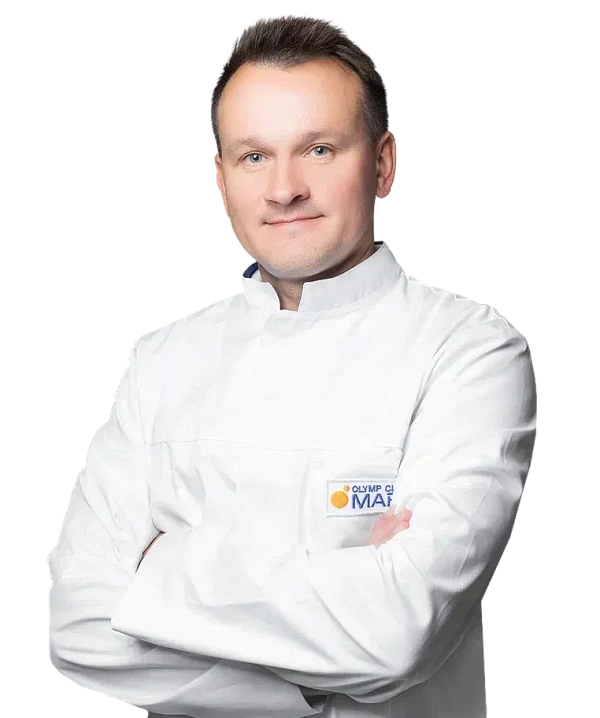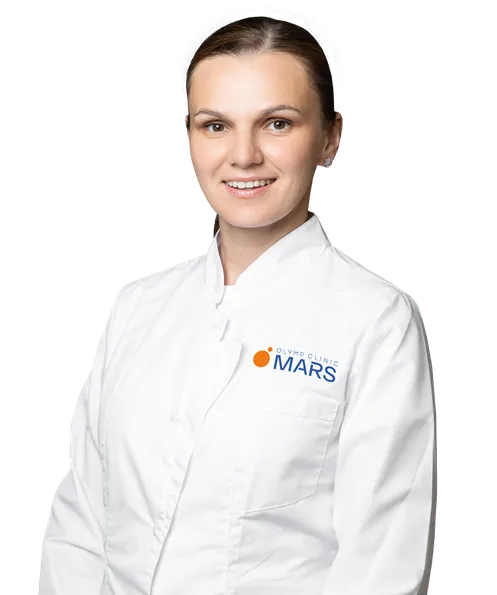Manual therapy
A method of treating diseases of the musculoskeletal system based on manual action on joints, spine, muscles and ligaments.
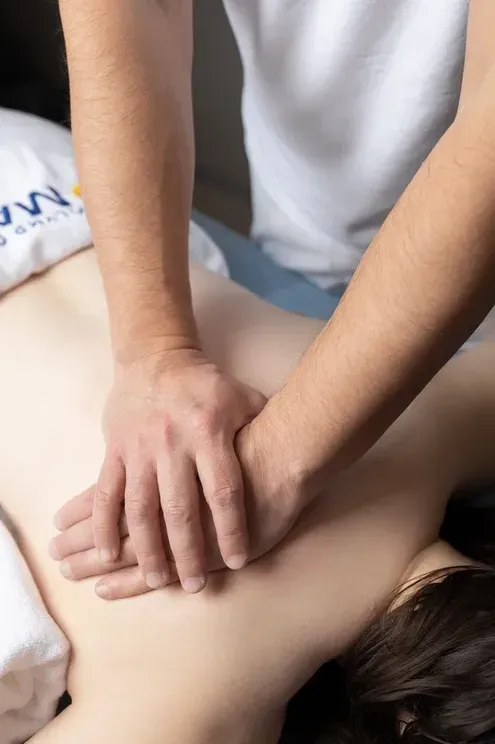
The musculoskeletal system often suffers from stress, sedentary lifestyle or injuries, which leads to limited mobility, pain syndromes and even chronic diseases.
Manual therapy restores the natural mobility of the spine and joints, improves tissue nutrition by increasing blood flow and lymph circulation. The technique is effective in the treatment of back and joint pain (osteochondrosis, arthrosis, arthritis, hernia, protrusion, etc.), as well as neurological complications, including radicular syndromes (radiculopathy, sciatica, sciatica, etc.). The procedure is aimed at eliminating symptoms and restoring the function of the motor segment. Manual therapy differs from massage: it affects not only soft tissues, but also directly on joints and related tendon-ligamentous structures (including intervertebral discs). This makes it an effective treatment method for patients with functional disorders of the musculoskeletal system.
A complete diagnosis is performed before the start of the manual therapy session: Collection of anamnesis and assessment of patient complaints. X-ray, MRI or CT scan. Inspection and functional tests to identify problem areas. The patient is recommended to wear comfortable clothes and avoid heavy physical exertion the day before the session.
The patient is placed on a massage couch in a comfortable position. The specialist manually corrects pathological changes by affecting joints, spine or muscles using special techniques: Manipulations: short jerky movements that restore joint mobility. Mobilizations: gentle stretches, tilts and rotations to eliminate tension and improve blood circulation. Soft techniques: relieving spasms, improving the elasticity of muscles and ligaments, eliminating pain.
Couches with height and tilt adjustment. Orthopedic pillows and cushions. Vibrating massagers or applicators for preparing tissues for exposure.
After manual therapy, the patient is recommended to rest for 15-20 minutes, avoid sudden movements and heavy physical exertion during the day. You should also warm the problem area to enhance the therapeutic effect.
Multifaceted impact— Improves the functioning of joints, muscles and nervous system. Without medicines— It helps to avoid side effects of medications. Personalization— The methodology is selected individually, which ensures high efficiency. Minimum of contraindications— It is suitable for patients of different ages and health conditions.
The effect of manual therapy
Patients notice significant improvement after the first sessions of manual therapy. Tension in the back disappears, joints become more mobile, and painful sensations decrease. In addition, this method not only eliminates the symptoms, but also helps restore the natural functioning of muscles and ligaments, improves blood flow and lymphatic drainage.
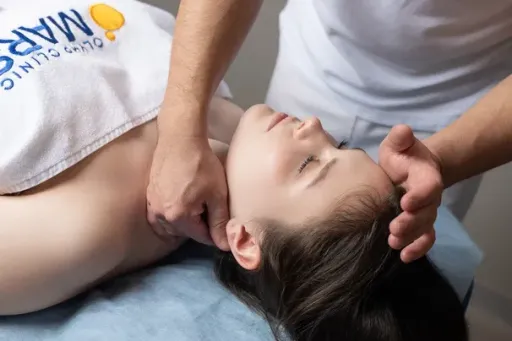
Who performs the procedures?
Manual therapy requires high qualifications, so our clinic employs only certified specialists with medical education. Our doctors use proven and safe techniques, adapting them to the needs of each patient.
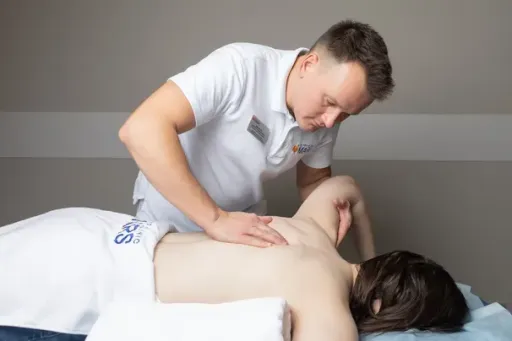
Frequently Asked Questions
How do I understand that I need manual therapy?
How long does the course of treatment last?
Is it possible to combine manual therapy with other methods of treatment?
Is the procedure painful?
Didn't find an answer to your question?
You can describe your problem in detail and ask a question to the doctor. He will answer you and help you find a solution
Specialists
Find a SpecialistCandidate of Medical Sciences. Orthopedic Trauma Physician, Chiropractor, Sports Medicine Physician, Physical Therapist. Head of the Rehabilitation and Restorative Medicine Department.
Useful information
Cervicogenic headache (CGB)
Secondary headache caused by pathologies of the cervical spine, surrounding soft tissues or nervous structures. The pain starts in the neck and can spread to the back of the head, forehead, and temples.
Myofascial Pain syndrome (MFBS)
A pathological condition characterized by pain in the muscles and their spasm due to the formation of trigger points - areas of increased sensitivity and tension in the muscle tissue.
Medial epicondylitis
A condition associated with overexertion of the flexor muscles of the hand and pronators of the forearm, which attach to the medial epicondyle of the humerus. It is one of the common causes of pain in the inner part of the elbow joint.
Lateral epicondylitis
Inflammation of tendons of the forearm muscles attached to the epicondyle of the humerus.
Similar referral activities
Consultation with a rehabilitologist
The doctor of the department of rehabilitation and restorative treatment is engaged in restoring or compensating for the lost functions of the patient after various injuries, operations and diseases.
High-intensity magnetic therapy (SIS)
The method of physiotherapy, which is based on the effect of a powerful pulsed magnetic field on body tissues, which contributes to pain relief, reduces inflammation and accelerates tissue regeneration.
Techar therapy
A method of physiotherapy based on the use of electromagnetic waves of a certain frequency for a deep impact on the tissues of the body.
Shock Wave therapy (UHT)
A treatment method based on the effect of acoustic shock waves on body tissues.
Low-frequency electrostatic therapy
A method of physiotherapy based on the effect of a low-frequency electrostatic field on body tissues.
Mechanotherapy
A rehabilitation method based on the use of mechanical devices to restore joint mobility and increase muscle strength in patients after injuries and operations on the musculoskeletal system.
How to reach
How to get
From the Belorusskaya metro station of the Zamoskvoretskaya line - exit 4 After exiting the subway, walk through the pedestrian tunnel and climb the stairs. Move towards the railway tracks, go down the stairs immediately after them and walk along the house, then turn right onto 1st Yamskoye Pole Street. At the turn to 3rd Yamsky Pole Street, cross the road at the pedestrian crossing and continue along 1st Yamsky Field Street, after a few buildings on the left you will see Olympus Clinic MARS.
Travel time
9 minutes
Landmark
Olympus Clinic MARS sign
How to get
From the Belorusskaya metro station of the Ring line - exit 2. After exiting the subway, turn left and walk to the pedestrian crossing. Cross the road through two pedestrian crossings and move along the Tverskoy overpass. Go down the stairs immediately after the railway tracks, walk along the house, then turn right onto 1st Yamskoye Pole Street. At the turn to 3rd Yamsky Pole Street, cross the road at the pedestrian crossing and continue along 1st Yamsky Field Street, after a few buildings on the left you will see Olympus Clinic MARS
Travel time
11 minutes
Landmark
Olympus Clinic MARS sign
From the metro station "Tsvetnoy Bulvar"
1 exit to the city, then left to the Garden Ring, at the crossing to the right, crossing the boulevard, one more crossing and at the traffic light to the left. The Olymp Clinic building is located overlooking the Garden Ring to the right of the crossing. Travel time is approximately 9 minutes. Landmark - sign Olymp Clini
From the metro station "Sukharevskaya"
Exit 3 from the metro and 640 meters straight ahead, the clinic will be on the right. Landmark - sign Olymp Clinic
Parking lot map
Exit 3 from the metro and 640 meters straight ahead, the clinic will be on the right. Landmark - sign Olymp Clinic
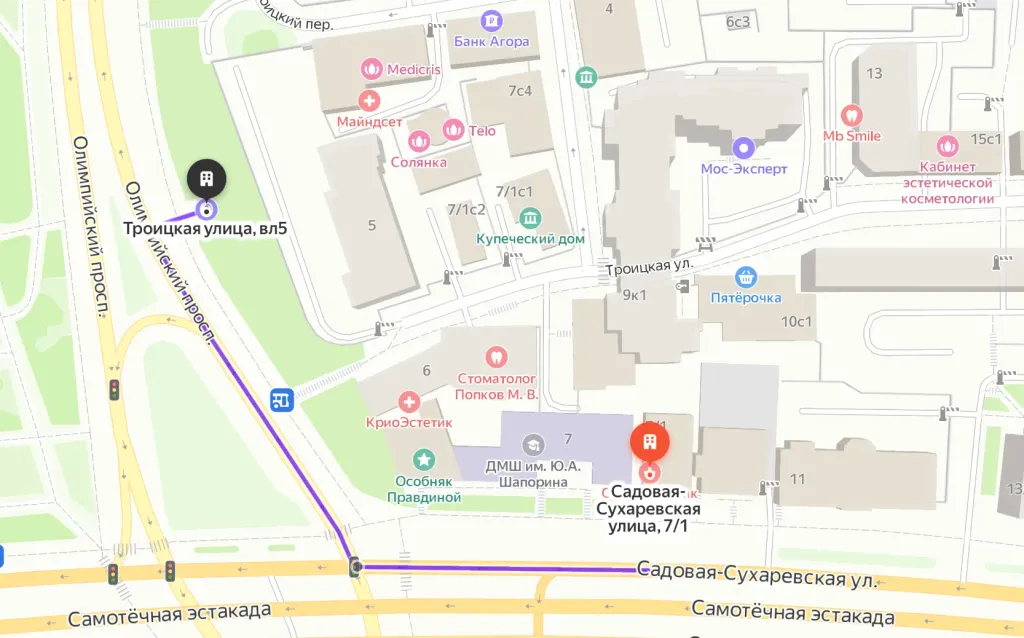
From Sokol metro station
The last car from the center: follow the signs for Exit 5. From the glass doors to the right and go to the end of the passage. Exit to the city by the steps to the left. After exiting the crossing to the street, go straight along Leningradsky Prospekt to the intersection with Chapaevsky Lane. Next, turn right (onto Chapaevsky Lane) and walk to the Triumph Palace residential complex. Entrance to the territory: through checkpoint No. 1, opposite the Vkusville store, you will need to present your passport. After passing through the checkpoint, go up the stairs to the fountain, opposite it you will see our clinic.
Travel time
10-12 minutes
From the Airport metro station
The first car from the center: follow the Exit 2-3 signs. Turn left out of the glass doors and walk to the end of the passage. After exiting the crossing to the street, go straight along Leningradsky Prospekt to the intersection with Chapaevsky Lane. Next, turn left (onto Chapaevsky Lane) and walk to the Triumph Palace residential complex. Entrance to the territory: through checkpoint No. 1, opposite the Vkusville store, you will need to present your passport. After passing through the checkpoint, go up the stairs to the fountain, opposite it you will see our clinic.
Travel time
12-15 minutes
How to get
Entry to the territory is prohibited, but there are free city parking lots around the Triumph Palace residential complex, where you can easily find a place for your car. Free parking area:

